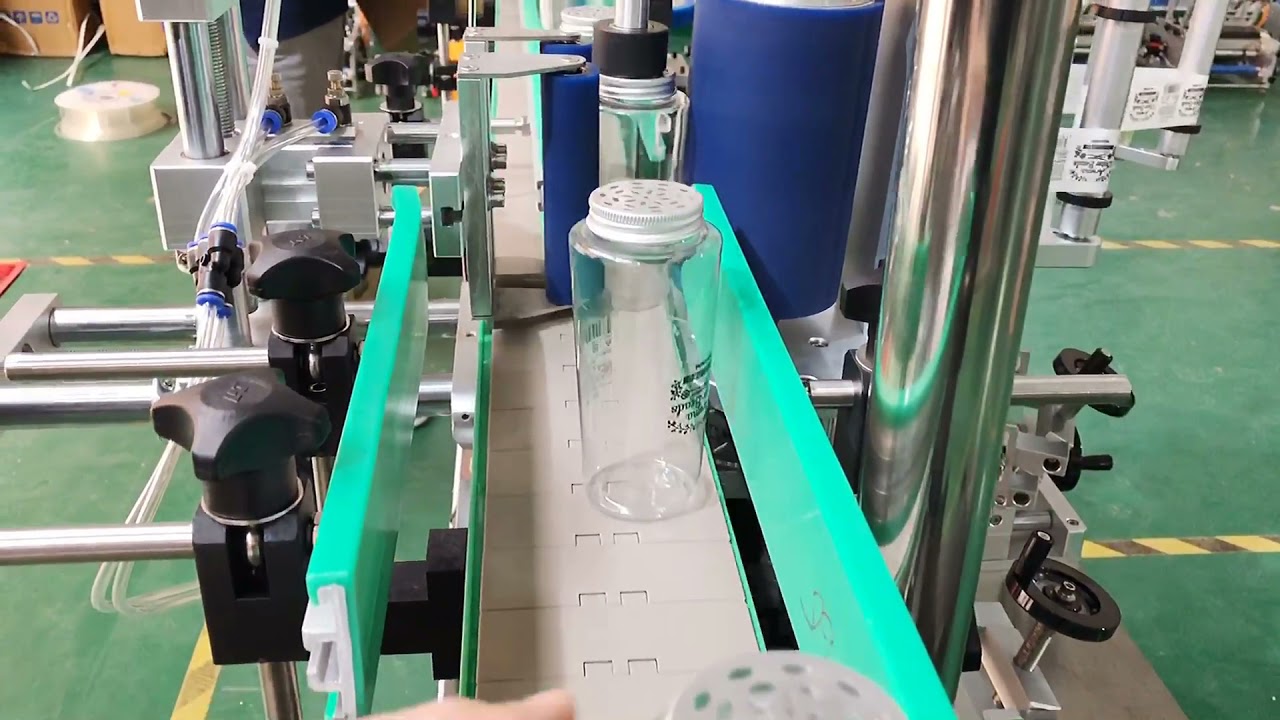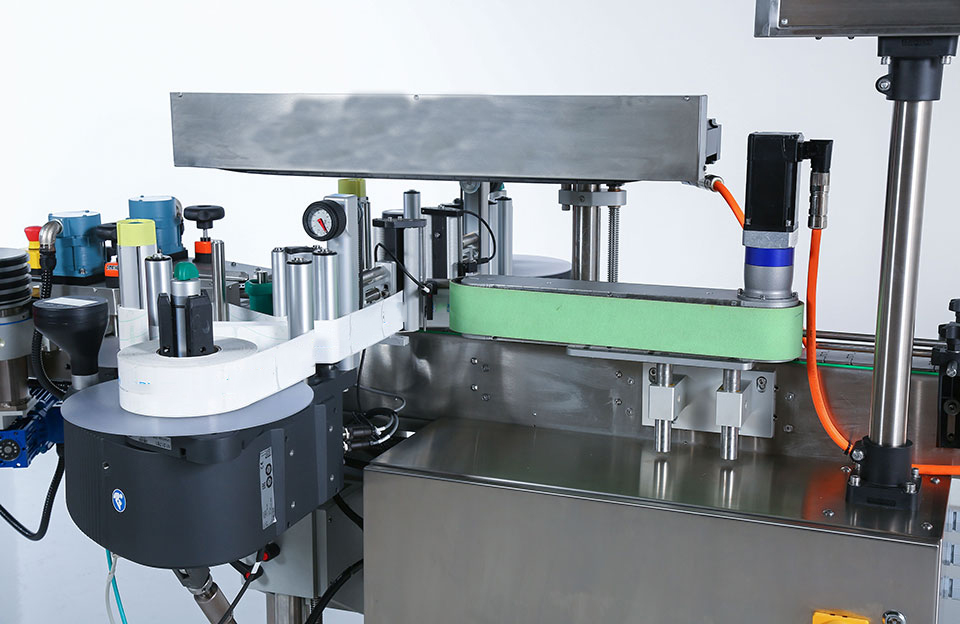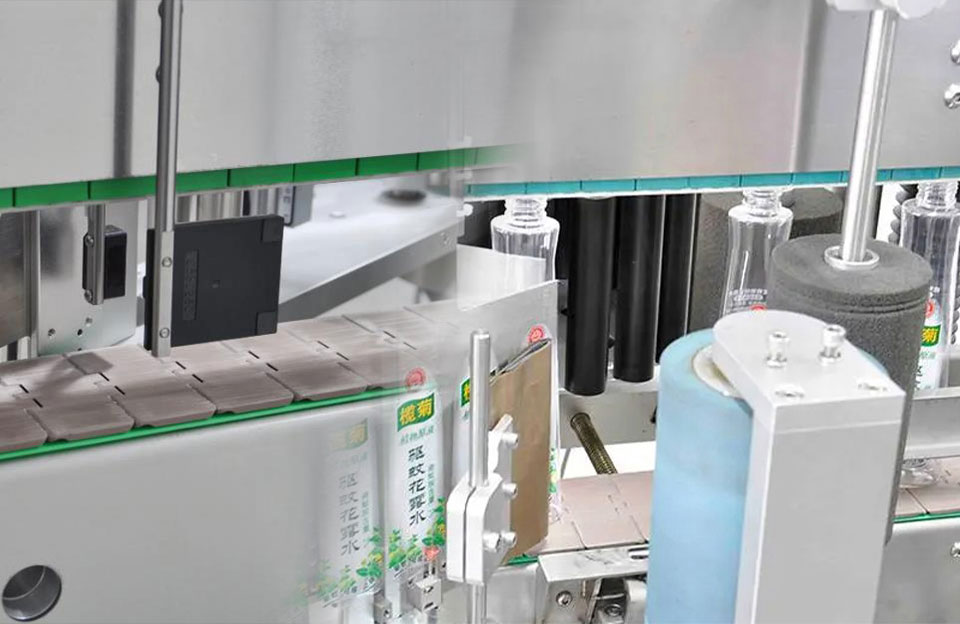The positioning method is a critical aspect of a labeling machine in various industries, especially manufacturing and packaging. It refers to the process of accurately placing labels on products or containers precisely and consistently. The positioning method in a labeling machine plays a crucial role in ensuring accuracy, compliance, productivity, and overall brand presentation.
Different Positioning Methods for Labeling Machines
The positioning methods for labeling machines mainly include the following:
- Sensor Positioning: Sensor positioning is one of the most common positioning methods for labeling machines. By using photoelectric sensors or other types of sensors, detect the position of the product or package and ensure that the label is precisely applied to the target surface. This method suits products or packages with regular shapes and relatively fixed positions.
- Vision System Positioning: Vision system positioning is an advanced labeling method. It uses cameras and image processing to identify features of a product or package, allowing for more precise label positioning. The vision system can pinpoint where to attach the label by analyzing information such as the product’s shape, size, and position. This method is especially suitable for products with complex shapes, irregular sizes, or high positioning requirements.
- Encoder Positioning: An encoder is a device used to measure motion or position. In a label applicator, an encoder can help determine the motion of a conveyor belt or object for accurate label application. Through the encoder, the labeling position can be monitored and adjusted in real-time to ensure the accuracy and consistency of labeling.
- Laser Positioning: Laser positioning is a high-precision positioning method for labeling machines. Using a laser to emit a laser beam and detect the position of a product or package by reflecting or transmitting the beam. Laser positioning enables very precise label applications for demanding applications.
- Mechanical Positioning: Mechanical positioning is a basic labeling method. Through the design and adjustment of the mechanical structure, ensure that the position and movement of the labeling head match the position of the product or package. The mechanical positioning method is simple, reliable, and suitable for basic labeling needs.
- RFID (Radio Frequency Identification) Positioning: RFID positioning uses RFID tags or transponders attached to the products or containers. The labeling machine is equipped with RFID readers that communicate with these tags to identify the position and orientation of the products. Automated production lines often employ this method to enable efficient and precise labeling.
- Vacuum Belt Positioning: In vacuum belt-positioning, the products or containers are held in place by a vacuum belt or plate as they move through the labeling machine. The vacuum system ensures the products are positioned accurately for label application, especially for small or lightweight items.

Labeling Machine
How to Choose Positioning Methods for Labeling Machines?
Choosing the right positioning methods for labeling machines involves considering several key factors to ensure accurate and efficient label placement. Here are some steps before choosing suitbale positioning methods for labeling machines:
- Understand Labeling Requirements: First, identify the specific labeling requirements. Consider the type of products or containers which need to label, their shapes, sizes, and surface characteristics. Determine if labels must be applied to flat surfaces, curved surfaces, or both. Understanding these requirements will help narrow down suitable positioning methods for labeling machines.
- Evaluate Labeling Speed and Throughput: Assess the production line’s required labeling speed and throughput. Some positioning methods might be faster and more suitable for high-speed labeling, while others may be more time-consuming but offer higher accuracy. Balancing speed and accuracy is essential to ensure productivity and maintain quality.
- Consider Label Placement Accuracy: Evaluate the level of accuracy needed for your labeling application. If precision is crucial, methods like visual system positioning or RFID may be more appropriate. For less critical applications, sensor positioning or mark detection methods might suffice.
- Analyze Budget and Cost Considerations: Different positioning methods vary in cost, with more advanced technologies often coming with a higher price tag. Consider the budget constraints and weigh the cost of the labeling machine, including any additional equipment or sensors required for a specific method.
- Assess Automation Level: Determine the automation level required in the labeling process. Advanced positioning methods for labeling machines like visual systems or RFID are well-suited for automated production lines, while simpler methods may require more manual intervention.
- Consult with Experts and Suppliers: Engage with labeling machine manufacturers and experts in the field to discuss the specific requirements. They can provide valuable insights into the capabilities of different positioning methods.
- Conduct Testing and Trials: If possible, perform testing and trials with different positioning methods on sample products or containers. This will allow the buyers to evaluate each method’s accuracy, consistency, and efficiency in the production environment.
- Consider Future Scalability: Consider the future needs and potential changes in labeling requirements. Choose a positioning method that adapts to different label types, product variations, and fluctuations in production volume.
Conclusion
The choice of the most accurate positioning methods for labeling machines depends on the specific labeling requirements and the level of precision needed for a particular application. In some cases, positioning methods might be employed to enhance accuracy and ensure consistent label placement.
Manufacturers should consider the product’s characteristics, production speed, and quality standards when selecting the most appropriate positioning method for their labeling machine.


